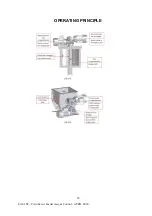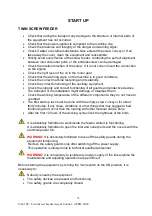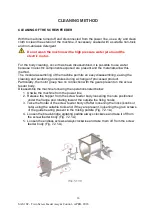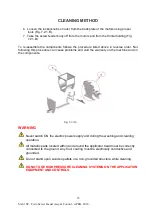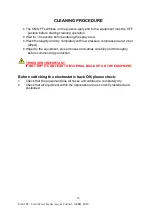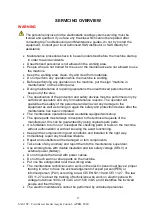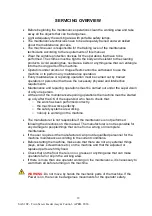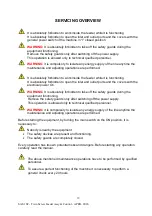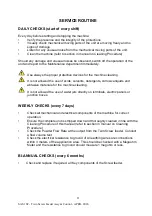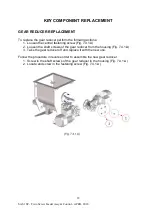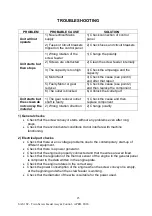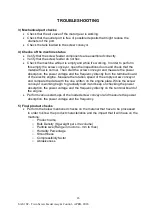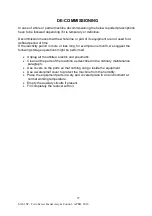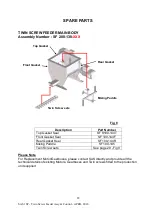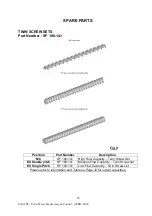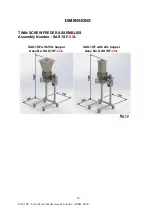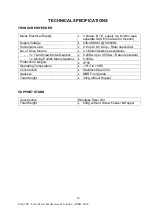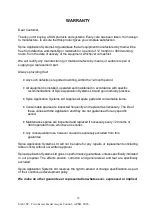
26
SAS 1SF - Twin Screw Feeder Assy & Control - APRIL 2020
TROUBLESHOOTING
3) Mechanical part checks
•
Check that the air valve of the motor gear is working.
•
Check that the outlet port is free of possible deposits that might reduce the
diameter of the port.
•
Check the tank loaded in the screw conveyor.
4) Checks of the machine status
•
Verify that the screw feeder components are assembled correctly.
•
Verify that the screw feeder do not flex.
•
Check the machine while it is empty and while it’s working. In order to perform
this empty the screw conveyor, open the inspections doors and check that the
material flow is normal. Then start the screw conveyor and measure the power
absorption, the power voltage and the frequency directly from the terminal board
of the electric engine. Measure the rotation speed of the empty screw conveyor
and compare the data with the one written on the engine plate. While the screw
conveyor is working begin to gradually load it and keep on checking the power
absorption, the power voltage and the frequency directly on the terminal board of
the engine.
•
Perform various start-ups of the loaded screw conveyor and measure the power
absorption, the power voltage and the frequency.
5) Final product checks
•
Perform the below mentioned checks on the material that have to be processed
in order to know the product characteristics and the impact that it will have on the
machine:
o
Product name
o
Bulk Density (Kg weight per Litre volume)
o
Particle size (Range in microns - min to max)
o
Humidity Percentage
o
Smoothness
o
Compressibility factor
o
Abrasiveness

